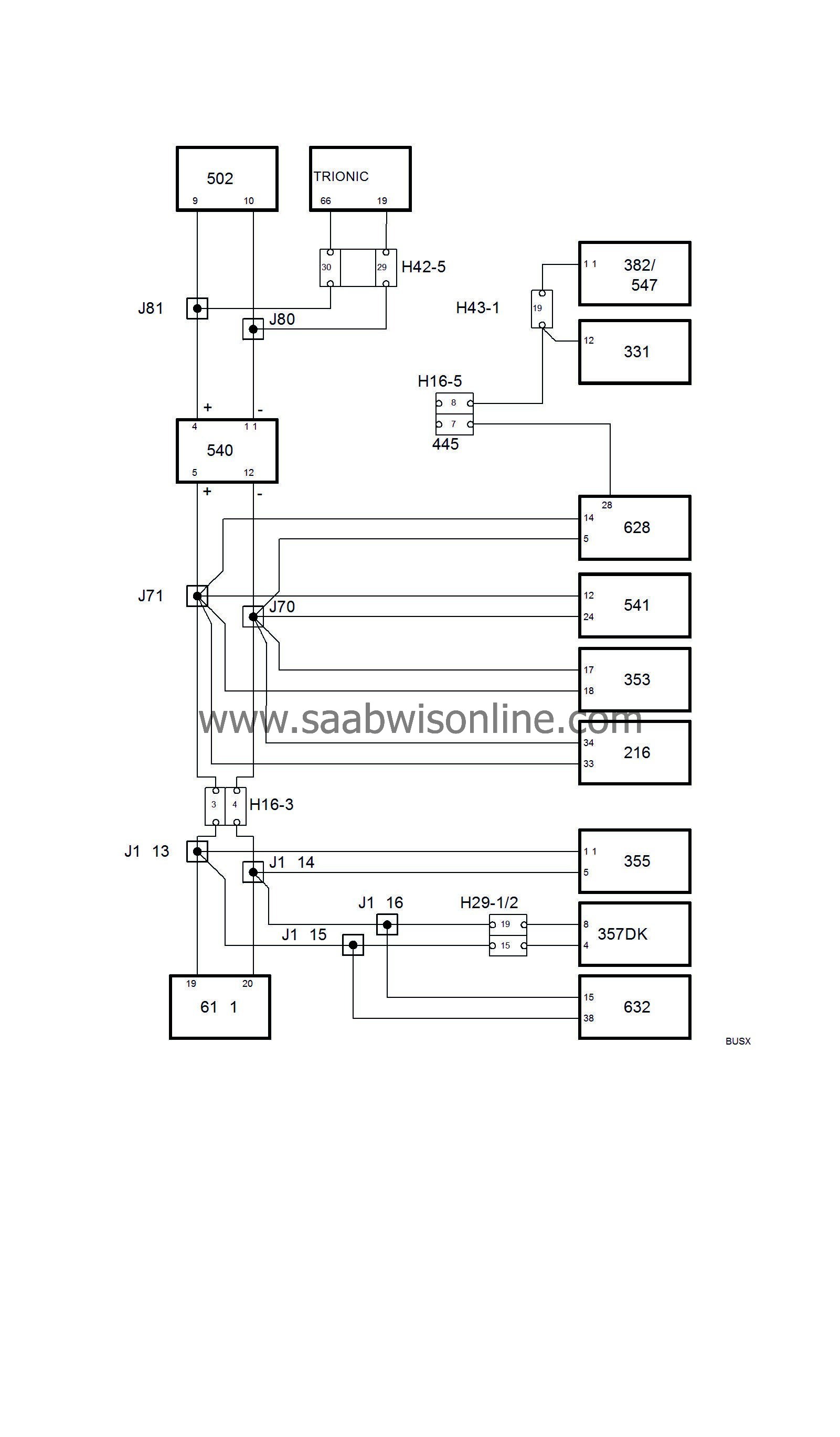Bus communication
| Bus communication |
| P-bus and I-bus |

In the Saab 9-5, all the car's control modules are connected to buses with the exception of the ABS and SRS control modules.
The buses consist of a P-bus (Powertrain Bus) and an I-bus (Instrument Bus). Both buses are connected to the MIU (Main Instrument Unit). The buses are electrically isolated from each other.
The P-bus has a data transfer rate ten times higher than that of the I-bus.
All information sent out on a bus by a control module is available to all other control modules connected to the bus. The MIU ensures that the information that is available on one bus is also available on the other.
The control modules send out information on the bus at regular intervals. The time between two transmissions depends on the information being transmitted and varies between 10 milliseconds (0.010 seconds) and one second. Information is also sent out by the control modules whenever the information changes.
Information interchange between control modules takes place on two leads, BUS+ (green lead) and BUS- (white lead). The two P-bus leads are twisted to reduce their sensitivity to electrical interference.
| Diagnostics |
In a bus system, all the units must be able to communicate with each other. For example, the engine cannot be started if Trionic is unable to receive immobilizer information from TWICE.
Permanent bus fault
All communication between the diagnostic tool and systems connected to a bus is via DICE.Irrespective of which system is contacted, the diagnostic tool will first check with the aid of the DICE that all systems in the car connected to a bus are awake and in communication. If any control module connected to a bus is missing, this will be displayed on the diagnostic tool. Thus, all control modules connected to a bus are communicating correctly if the diagnostics tool does not give a warning.
Intermittent bus faults
The Trionic control module and the transmission control module (TCM) continuously check that all control modules from which they obtain information are communicating correctly. If intermittent faults occur in bus communication, diagnostic trouble codes will be generated in the Trionic and transmission control modules. The cause of the fault may be that the control module concerned has lost power or one of the bus leads is disconnected.In the case of an intermittent bus fault, the diagnostic trouble code text will refer to a fault diagnosis procedure described in the ”Bus and diagnostics communication” category.
Incorrect values on the bus
A diagnostic trouble code will be generated in the Trionic and transmission control modules if any information they obtain from the bus is incorrect. The trouble code text indicates the system where the fault has occurred.For further information on the bus, see Group 3, Bus and Diagnostic Communication .
| The PMM uses the following information: |
| Information | Sensor system | |
|
Memory function (memory store button + memory buttons 1, 2 and 3), driver's seat
|
PSM
|
PMM receives information that memory store is being carried out.
|
|
Memory buttons 1-3, driver's seat
|
PSM
|
The current memory function depending on which button has been pressed.
|
|
Reverse gear
|
DICE
|
Receives information if reverse gear is engaged. PMM uses the information to tilt the passenger door mirror when the tilt-down button on the switch is pressed.
|
|
Steering wheel location
|
TWICE
|
PMM receives information on whether the car is LHD or RHD.
|
|
Diagnostics
|
DICE
|
PMM communicates with the diagnostic tool via DICE
|
| PMM outputs the following information: |
| Information | Used by | |
|
Diagnostics
|
DICE
|
The diagnostic tool receives information from PMM via DICE.
|



